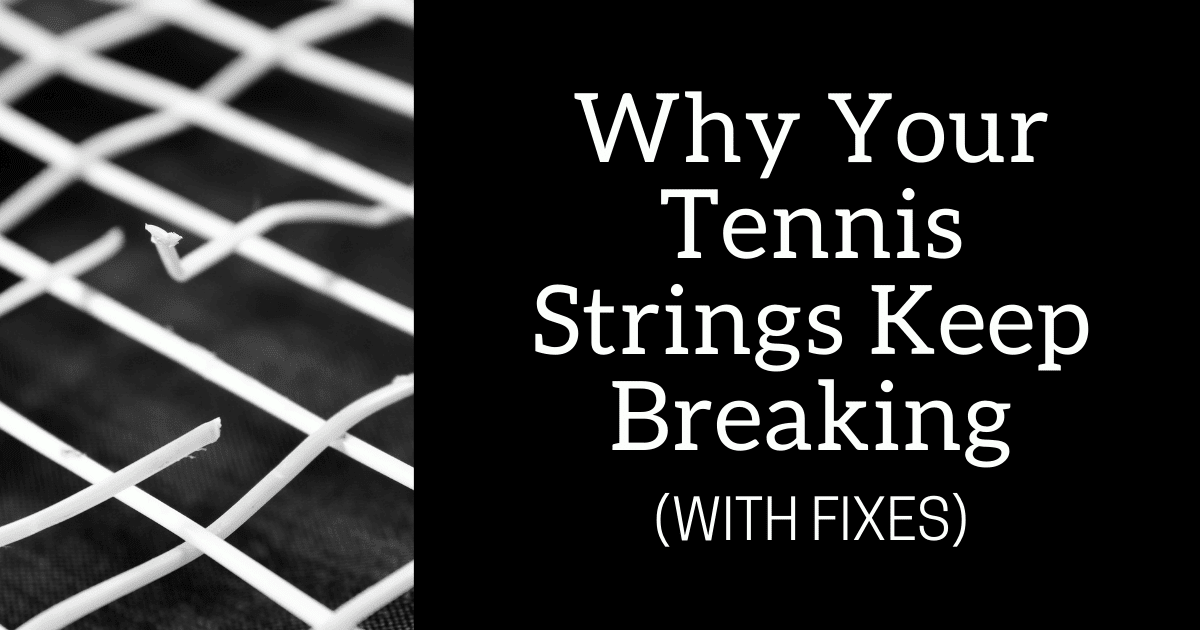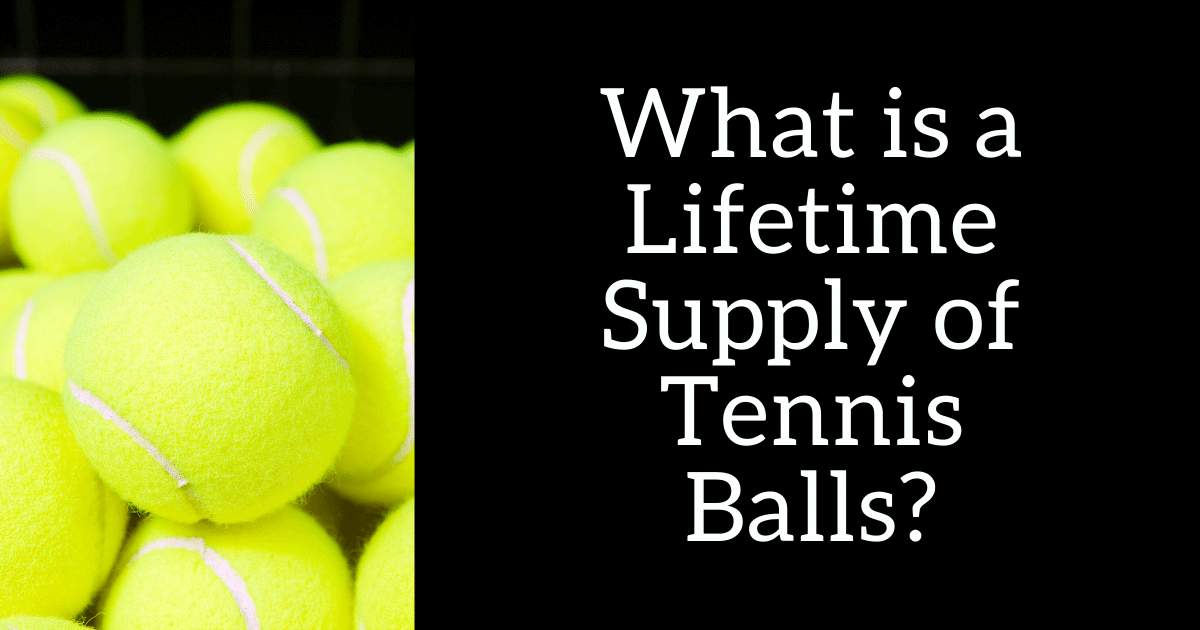Any links on this page that lead to products on Amazon are affiliate links. As an Amazon Associate I earn from qualifying purchases.
Tennis rackets can be confusing enough for adults. The manufacturers don’t make it any easier when they design them for juniors to use.
You’d think they would try to make it a bit easier, but that’s not the case. Fortunately, you have us to help you navigate everything.
Junior tennis rackets come in more sizes than adult rackets do, so it’s important to get it right with a tennis racket size guide and nail down the right age ranges versus racket lengths.
It doesn’t have to be all that daunting.
We’re going to explain length differences and grip sizes, as well as string tension and more, all in an effort to turn your little tyke into the next superstar tennis player.
This post covers a broad range of topics regarding junior racquets. Let’s take a look at the best junior tennis rackets on the market.
Our Reviews Of The Best Junior Tennis Rackets
The available selection of racquets for children pales in comparison to what is available for adults. More sizes may be available, but there isn’t nearly as much variety. Even without a tremendous number of choices, Wilson has put out a top-notch option.
Crafted out of aluminum and nylon, this durable children’s racquet is basically the ultimate choice for a beginner.
With a 23” total length, it has an oversized head (for their age at least) to help them land their shots and serves with flying colors.
Normally, over 100 square inches of surface area would be good, but there’s just something about this 92 square inch racket that provides good balance and even weight distribution.
Wilson is known for producing quality tennis products and this racquet is no exception.
However, you do get what you pay for and in this instance it’s a racquet that will last about one year or so.
While the nylon strings are good, kids are tough on just about everything, and these strings will likely break after about a year of use.
After about a year your child will probably be upgrading, but it’s still something to keep in mind.
Wilson’s goal is to get your child using their brand and being familiar with it as they grow up and upgrade their equipment.
Technical specifications
- Size: 23”
- Weight: 6.9 oz
- Materials: Aluminum
- Head Size: 95 square inches
- String Material: Nylon
#2 Wilson Youth Burn Pink Tennis Racket
Wilson made the best kids tennis racket and the second-best kids tennis racket. You just can’t beat the price and quality.
Wilson has been known to use upgraded strings in many of their adult models (natural gut), but your children are going to outgrow these rackets quickly that there’s no point.
Instead, Wilson’s own brand of nylon strings does the trick just fine.
With the Junior Burn, you have four sizes to choose from.
So the strings are good, there are plenty of size options, and the aluminum frame is set to last a lifetime.
The performance is slightly less than the US Open Junior, but it was a tough claim for the top spot because the Junior Burn is thought to be more durable.
Technical specifications
- Size: 19” - 25”
- Weight: 6.2 - 7.9 oz (depending on size)
- Materials: Aluminum, nylon
- Head Size: 80” - 95”
- String Material: Nylon
#2 Babolat Pure Drive 2021 Junior 25 Inch Tennis Racquet
Babolat was named after one of the pioneers of tennis as we know it today and they are always part of the conversation when it comes to highly regarded racquets.
Look at any of these junior tennis racquet reviews and you’ll see where everyone is very picky pointing out deficiencies in all brands. Babolat isn’t known for being a low-cost brand and their products are usually worth the price.
Being one of the best tennis racquets for kids, this isn’t exactly cheap when you compare it to Wilson. (As an aside, Wilson refers to them as ‘rackets’ while Babolat refers to them as ‘racquets’ so I use the spelling per brand.)
Babolat took the time to include some serious features such as the internal cortex system and woofer technology to muffle the handle vibration.
Speaking of the handle, you can choose between three different sizes. Flexibility like this may mean this is the last junior racquet your child will need.
Made from graphite with nylon strings, Babolat kept the cost as low as possible while still paying a lot of attention to detail.
It’s admittedly expensive, but as with everything, you get what you pay for.
If your little one is dead set on being fantastic at tennis, a good racquet is a necessary tool to get them there.
Technical specifications
- Size: 25”
- Weight: 8.1 oz
- Materials: Graphite
- Head Size: 100 square inches
- String Material: Nylon
#3 Street Tennis Club Tennis Racket for Kids
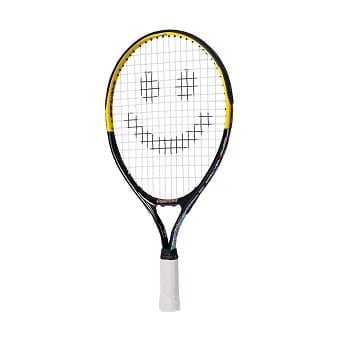
Street Tennis Club doesn’t make the best youth tennis racket but they make a fair model with a great price tag that anyone can get behind.
They focus on a style that appeals to kids (the smiley face design always gets a laugh) and the right specifications that appeal to adults so it’s a perfect mix of often opposing desires.
Crafted out of a durable nylon string composition and aluminum frame, these rackets are meant to withstand drops, dings and scrapes as kids are known to do.
This is competitively priced and one of the cheapest rackets you’re going to find anywhere. While Street Tennis Club is no Wilson, it’s still a solid, quality racket that your kids will love.
Technical specifications
- Size: 17” - 21”
- Weight: 8 oz
- Materials: Aluminum
- Head Size: 98 square inches
- String Material: Nylon
#4 HEAD Speed Kids Tennis Racquet
Last but not least, we have another inexpensive model that’s designed to be aesthetically pleasing to children so they actually want to use it.
These racquets feature an aluminum frame with an o-beam interior construction that makes it practically indestructible.
It’s okay if kids drop it; it’s what they do. Apart from that, the nylon strings are also pretty fantastic with a bit of extra elasticity to them.
The point is they’re not just designed for children’s size, they’re designed for necessary roughness.
You can even feel it in the ultralight design weighing in at just over 7.4 oz.
With a 3 ⅝” grip size, it’s the perfect size for smaller hands.
HEAD is your go-to bargain brand that won’t break the bank so your children can continue to enjoy their favorite sport without leading to their parent’s financial upset.
They’re just made inexpensively to ensure all children have a chance to play.
Technical specifications
- Size: 25”
- Weight: 7.4 oz
- Materials: Aluminum
- Head Size: 107 square inches
- String Material: Nylon
Junior Tennis Racket FAQ
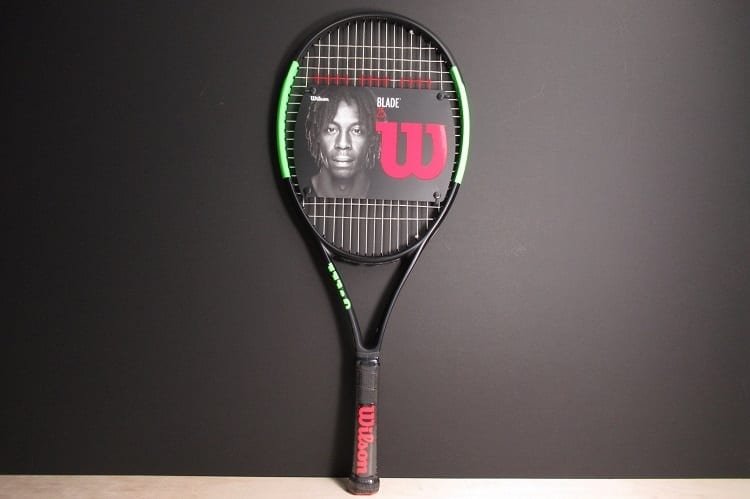
How do You Choose a Tennis Racket for a Child?
You listen to them.
Start them out on the recommended size (see below) so that their center of gravity is aligned, and then see how they feel when they play with it.
Kids tend to overanalyze things and exaggerate, so take their feedback with a grain of salt and apply what seems reasonable.
If they’re feeling sore wrists or arm muscles, the racket is too big. Even if they’re in the 4-5 age range for the racket chart you’ll find below, it doesn’t mean that they’re fully ready for it.
You can downgrade them to the 1-4 age range without worry.
You don’t really have to worry about weight draw and square inch space on the racket head right now.
That’s something that you’re not going to find much variety on since kids outgrow their racquets so quickly.
Instead, those attributes will apply to adult rackets that your kids will start to use around age 12.
What Size Tennis Racket Should I Buy for My Child?
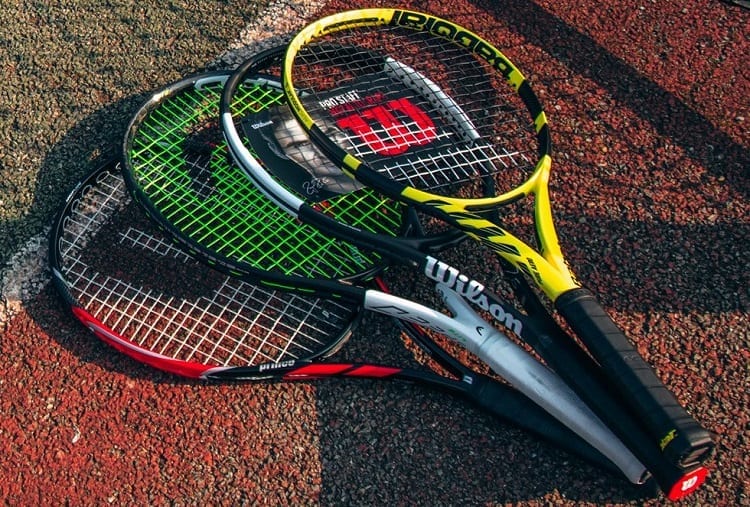
First, understand that every child is different.
Find out your child’s arm span measurements and take that into account.
That being said, this is a brief chart of the average size racket that children use based on their age.
Breakdown by Age:
1 to 4: 19”
4 to 5: 21”
6 to 7: 23”
8 to 10: 25”
10 to 12: 26”
From that point the next step up is a 27” racket which is an adult-sized racket.
The age chart here is a good metric to begin with when selecting the right youth tennis racket, but it’s by no means the only thing that you should be on the lookout for.
If your child has an innate talent for tennis, consider getting them a slightly larger racket than the suggestion for their age range.
Muscle and wrist strength strongly come into play when deciding the right length and head size.
If they can handle a bigger size, go for it; they’re going to have to upgrade one day anyway.
If you notice that going for a larger size negatively impacts their performance in tennis, revert back to the smaller racket and try again in six months.
Does a 1” Jump in Racquet Size Matter?
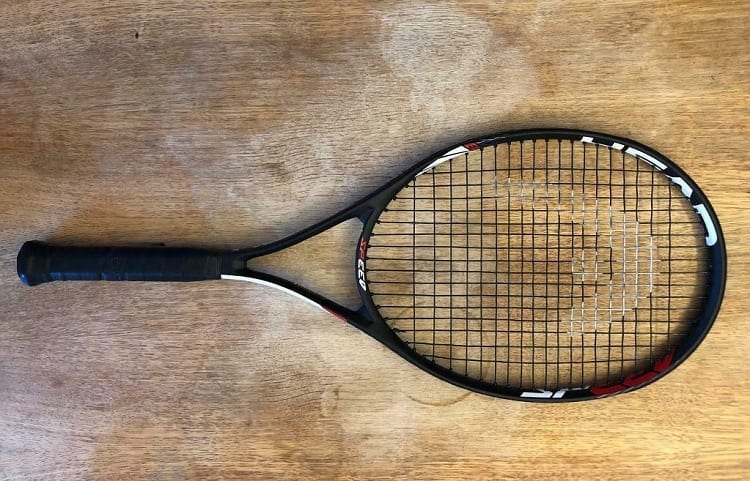
Does that extra inch really matter?
Yes, it does.
Children are still developing muscles and certain parts of the brain and those will all change again once they enter puberty.
These slight adjustments in racquet size are mostly accounting for minor muscle development and the average growth cycle of a child; arm length, height, weight and span.
The racquet length mixed with your child’s abilities all meet at one point: their center of gravity.
This is the point in their body where they feel “level,” or where their balance resides. For taller people, it might be closer to their upper chest, and shorter people it could be their hips.
Children are technically developing their center of gravity as they go through growth spurts, so these slight adjustments grow alongside them.
How do You Size a Youth Tennis Racket?
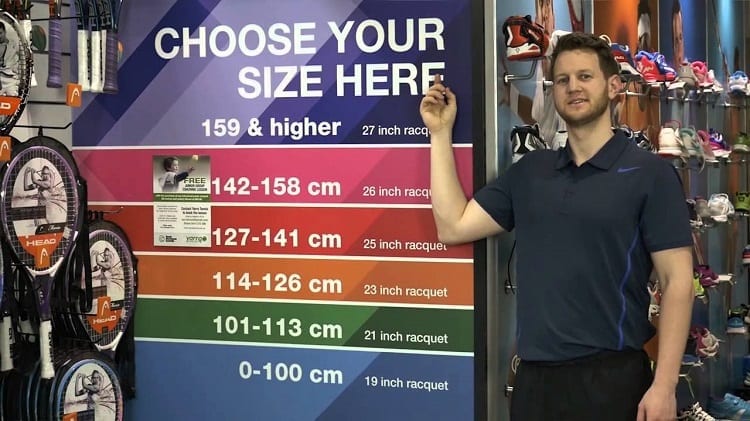
A big part of it depends on their arm length.
There are going to be times where they use two hands for a two-handed backhand, but most of their swings are going to be one-handed.
If they have short arms, you don’t want them lugging around a long or heavy racket. They’ll be slow to swing and likely be fatigued more quickly.
A good rule of thumb is to scale down from an adult’s tennis racket size. For an adult, you would find out your total arm span and work back from there.
If your arms are 27” long (54” in total of just arm span), then you would need a 27” racket. The same applies to your children.
How to String a Junior Tennis Racket?
You need a versatile stringing machine to restring a racket to the recommended tightness that the manufacturer has laid out for the racket whether an adult racket or a junior racket.
However, unless your junior is lighting up the junior circuit, the original strings will likely last for the duration of the use of the racket.
When to Replace a Junior Racket with a Regular One?
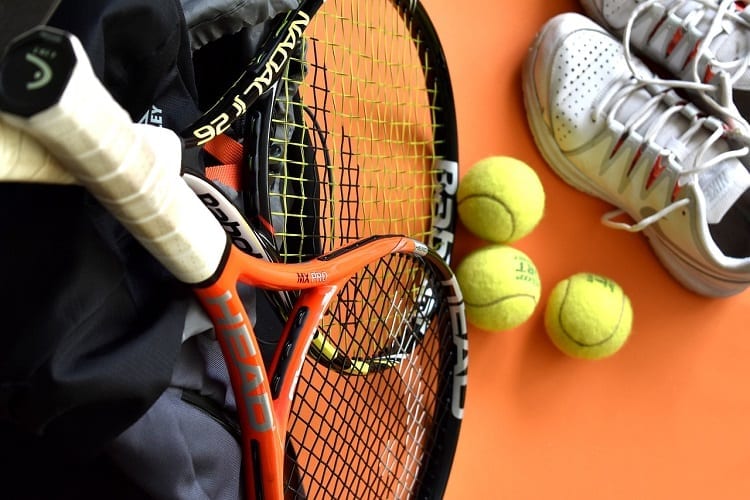
Junior rackets obviously only last for so long before your child outgrows them. From there you need to determine what the best course of action is going to be.
There’s basically those five main youth sizes outlined above and each has a general age range to follow.
Some kids are more skilled than others while some grow like weeds. In both instances they may need a bigger racket. Asking yourself the following questions to determine if your child requires something bigger:
Is your child swinging really fast to the point that they’re missing the ball?
This is a clear and classic way to tell if they’ve outgrown their racket.
Because of the racket length and the grip size, once their wrist and arm muscles have grown and they’re getting taller, it’s like they’re swinging around a breadstick.
If it’s too easy for them to swing it (only to the point that it’s affecting their accuracy and performance), upgrade to the next size.
Can their hands actually grip the racket during a Two-Handed backhand?
Even when adults hit a two-handed backhand, they’re able to put both of their hands around the grip.
If your child can’t do that because their fingers wrap around too much, they likely need a bigger one to be more comfortable striking the ball.
Are they just ridiculously skilled?
Just like kids in school tend to act out when they’re bored/not challenged, the same can happen on the tennis court.
If they aren’t challenged and improving, they’re not really going to feel engaged with the game.
If they’re too good and starting to lose interest, upgrading their racket size to the next age range might be the key to reengaging.
At the end of the day, talking with your child about where they are with their tennis journey is also a good idea.
This will give you a better idea of what they’re expecting out of the game, where their challenges are, and it all leads to insight into their gear.
Time for Your Kid to Decimate Junior Tennis
There’s a lot to learn and kids can get frustrated rather easily. Tennis is a technical sport that requires time and patience to get the hang of it.
It’s extremely important to have the best junior tennis racket for the job so that you can be assured that your child has the necessary tools to be successful on court.
It’s a lifelong sport that could not only keep them fit and active, but it could lead to big things one day…
What if they are the next Federer? You’ll be the one lighting their path every step of the way!






